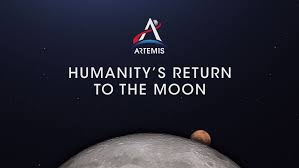NASA begins assembling Artemis Space Launch System

Photo used with permission from Google Commons
NASA’s Artemis Mission plans to return humanity to the moon by 2024, and has already begun assembling spacecrafts and training astronauts.
NASA has begun to build the Artemis Space Launch System (SLS), which will be a key factor in future missions to the moon.
The Artemis I Mission, which is set to take place in 2021, will be an unmanned spacecraft to test the rocket ahead of future ventures to the moon. NASA’s Artemis Program, with the intent of returning astronauts to the moon by 2024, has begun construction at NASA’s Kennedy Space Center in Florida, where engineers lowered the first of 10 segments into place for the rocket boosters that will power the flight of their new spacecraft. Recently, 18 astronauts were selected and announced by Vice President Mike Pence. The astronauts included nine women and nine men.
The Artemis Mission holds meaning for the future of space exploration. Honors Physics teacher Suzanne Smedberg said, “The Artemis Mission shows a re-dedication to a broader space program. Our work with the ISS is excellent, but I’m eager to see what will happen as we start taking steps toward deeper space exploration. I’m hopeful that we can learn things on these early missions that will allow us to not only keep our astronauts safe moving forward into the unknown, but also be mindful of how we treat new ecosystems we encounter. The crew of Apollo 11 went to the moon more than 50 years ago with less processing power than a typical smartphone. Imagine what a diverse set of ideas and today’s incredible technology could do next.”
Students also see potential future implications of the Artemis Mission. Junior Dylan Safai said, “I believe that the beginnings of the Artemis missions are an enormous step for mankind since they offer us a window into what living on a planet like Mars would be like. I believe it would have great implications for the future, since a woman astronaut would visit the moon, and will allow for scientists to develop sustainable elements on and around the moon to explore even farther than done before.”
Junior Jack Parsons agrees with Safai’s opinion about the importance of the Artemis mission with implications for landing a woman on the moon. “The Artemis mission is a great stride for women, landing the first woman on the moon and establishing that women are equal to men both on Earth and throughout space. This is an amazing accomplishment for NASA and for women.”
Your donation will support the student journalists of Thomas S. Wootton High School. Your contribution will allow us to purchase equipment and cover our annual website hosting costs.
Simon Kidane is a 2022 graduate.






